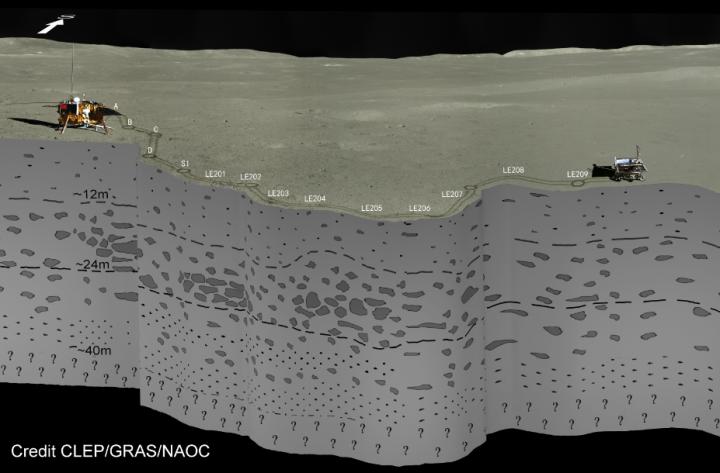Due to that, radio signals reached a depth of 40 meters using a 500 MHz frequency - more than three times the depth previously reached by CE-3. This data allowed the researchers to develop an approximate image of the subsurface stratigraphy.
The researchers combined the radar image with tomographic data and quantitative analysis of the subsurface. They concluded that the subsurface is essentially made by highly porous granular materials embedding boulders of different sizes. The content is likely the result of a turbulent early galaxy, when meteors and other space debris frequently struck the Moon. The impact site would eject material to other areas, creating a cratered surface atop a subsurface with varying layers.

Subsurface stratigraphy seen by Yutu-2 radar on the far side of the moon. Image: CLEP/CRAS/NAOC
The results of the radar data collected by the LPR during the first 2 days of lunar operation provide the first electromagnetic image of the far side subsurface structure and the first 'ground truth' of the stratigraphic architecture of an ejecta deposit.





Comments